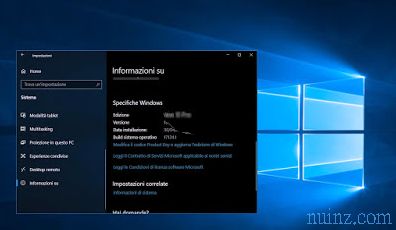Starting from the update to iOS 11, on all iPhones there is an application called File, which as you can easily imagine, should serve to manage the files that are stored in the Apple smartphone.
This would be a key app to use on any device and its presence on the iPhone and iPad has long been in demand.
Unfortunately however, since iOS is a closed system, from File, which should be similar to the Finder of the Mac, it is only possible to browse the folders of data saved in File or in the cloud, then in iCloud or in other archives that support integration in File.
Although its use will still remain marginal on the iPhone (perhaps more useful on the iPad), it is still worth discovering what can be done with File and how to use this new application .
READ ALSO: How iCloud works on iPhone and iPad
When you open the Files application, you will find two tabs, one for viewing recent files and one with the " Browse " file.
Both sections will likely be empty unless you are actively using iCloud.
You must therefore tap on Positions, at the top, in order to add external sources of files that can be managed through the Files app.
To do this, however, you need to add supported external applications such as Dropbox or Google Drive.
If you use a cloud file archive, then, you can use the Files app to browse folders and various data, to be able to open them.
The files will always be opened with the default apps, therefore not within File.
In the Positions section, you can press the Edit button at the top to be able to choose which of the archives to include in the "Browse".
Inside File on iPhone and iPad you can only create folders within the iCloud location, while for other locations there is only the possibility to browse folders.
Creating a new folder in the Files app is not as immediate as it might seem, because the button is hidden.
To see it, you need to get into iCloud Drive and swipe down.
Then touch the button at the top left to create a new folder that can be given any name.
For each folder, you can tap on the empty space and hold to see an Info option that tells us some details about the space occupied and the dates of creation and modification.
In Info there is also the option to add a tag to the folder.
Tags are used to organize folders and files in different locations to easily find them.
Folders can be dragged one inside the other as you do on a PC.
Next to the button to create a folder there is the one to sort the data by Name or also by date, by size and by tag.
How to add files in Files and inside the created folders "> It then becomes possible to save that file in iCloud or in a location inside the iPhone (even if this saving does not work well for now).
Documents saved in File can also be shared, by touching and holding on the file and scrolling through the various options to the right until you find the one to share.
In essence, the file app on iPhone and iPad is poor in features at the moment, it allows you to do very few things, it only works to manage files inside iCloud and can be useful only if you intend to create a central repository of the files that are often used between different applications, so as to avoid duplicates.
This is an event that does not happen often, but perhaps those who use Apple devices for work could benefit.
Alternatively, file manager applications can always be installed on iPhone and iPad
This would be a key app to use on any device and its presence on the iPhone and iPad has long been in demand.
Unfortunately however, since iOS is a closed system, from File, which should be similar to the Finder of the Mac, it is only possible to browse the folders of data saved in File or in the cloud, then in iCloud or in other archives that support integration in File.
Although its use will still remain marginal on the iPhone (perhaps more useful on the iPad), it is still worth discovering what can be done with File and how to use this new application .
READ ALSO: How iCloud works on iPhone and iPad
When you open the Files application, you will find two tabs, one for viewing recent files and one with the " Browse " file.
Both sections will likely be empty unless you are actively using iCloud.
You must therefore tap on Positions, at the top, in order to add external sources of files that can be managed through the Files app.
To do this, however, you need to add supported external applications such as Dropbox or Google Drive.
If you use a cloud file archive, then, you can use the Files app to browse folders and various data, to be able to open them.
The files will always be opened with the default apps, therefore not within File.
In the Positions section, you can press the Edit button at the top to be able to choose which of the archives to include in the "Browse".
Inside File on iPhone and iPad you can only create folders within the iCloud location, while for other locations there is only the possibility to browse folders.
Creating a new folder in the Files app is not as immediate as it might seem, because the button is hidden.
To see it, you need to get into iCloud Drive and swipe down.
Then touch the button at the top left to create a new folder that can be given any name.
For each folder, you can tap on the empty space and hold to see an Info option that tells us some details about the space occupied and the dates of creation and modification.
In Info there is also the option to add a tag to the folder.
Tags are used to organize folders and files in different locations to easily find them.
Folders can be dragged one inside the other as you do on a PC.
Next to the button to create a folder there is the one to sort the data by Name or also by date, by size and by tag.
How to add files in Files and inside the created folders "> It then becomes possible to save that file in iCloud or in a location inside the iPhone (even if this saving does not work well for now).
Documents saved in File can also be shared, by touching and holding on the file and scrolling through the various options to the right until you find the one to share.
In essence, the file app on iPhone and iPad is poor in features at the moment, it allows you to do very few things, it only works to manage files inside iCloud and can be useful only if you intend to create a central repository of the files that are often used between different applications, so as to avoid duplicates.
This is an event that does not happen often, but perhaps those who use Apple devices for work could benefit.
Alternatively, file manager applications can always be installed on iPhone and iPad

















